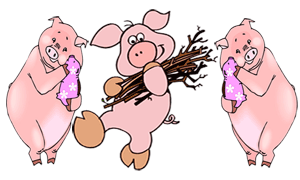This past week, I completed my Real-life Reading Inquiry. For this assignment, I chose to observe a reading lesson with my younger brother, who is a 5th grade student. The assignment he completed focused on fluency. As we learned, fluency has many meanings, but most importantly it means being able to read quickly yet accurately while comprehending the text. The activity chosen for him was a Webquest activity, which is a web-based activity in which the learner gathers most of their information from the web. The particular Webquest he did was entitled "
Fairy Tales and Tall Tales-Reading for Meaning and Fluency". The format of Webquests includes a: introduction, task, process, evaluation, and conclusion.
Since this was a self-guided lesson, I limited the activity to an hour. The task B (name has been changed) had to complete involved him first choosing a fairy tale. A link on the "process" tab of the Webquest directed B to a list of Fairy Tales that he could chose from. For this activity, he decided to chose the story of the "Three Little Pigs". I instructed B to first listen to me as I read a paragraph, then he would read the next one. Since B struggles reading aloud as an "expressive reader" I changed the format. On the third paragraph, I read first, then I instructed him to repeat the paragraph as I did. This reminded me of Chapter 4 of
Classrooms that Work. In this chapter, Cunningham states that "one of the major ways we become fluent readers is to read something over several times. One way to do this is by practicing
Echo Reading, which is what I demonstrated with B. After I should him the proper way to read the text, he continued to read the story, but with more expression. After B completed the story, he was instructed to complete a series of questions to check for comprehension. To make sure B remembered the important parts of the story, he answered things like: "Who is the main character(s)?, Describe the setting, and What is the problem of the story?." In chapter 7 of
Classrooms that Work, it mentions that a good way to check for comprehension is to ask questions throughout the lesson. Asking questions helps the child remember important parts of the story.
To close the lesson, I told B to draw a picture of his favorite part of the story. In his picture, he drew the three pigs in the brick house, with the wolf trying to blow the house down. This seemed to be his favorite part of the lesson. Overall, this was a very enjoyable assignment for both of us. I was able to apply techniques from articles that I had previously read, and he was able to practice his fluency skills!









